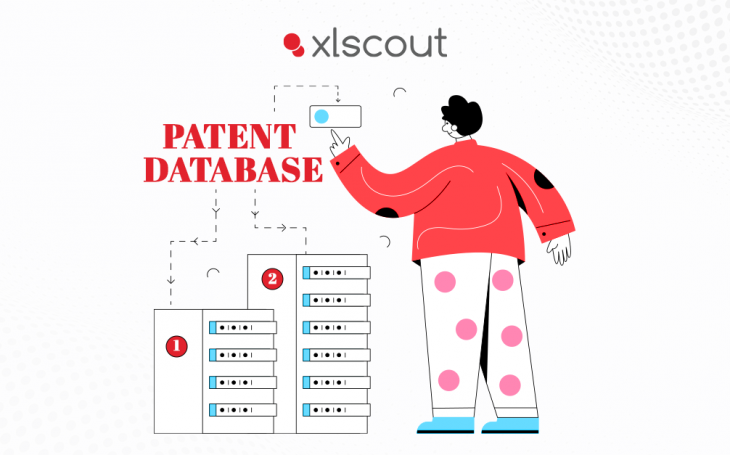
Many patent professionals are unsure when a patent search is complete. When missing significant prior art can have serious consequences, maintaining a balance between efficiency and quality is critical. Using only one patent database search technique limits the breadth of your search and exposes you to rejection of your application as well as future infringement or invalidation claims. We recommend combining the power of semantic and Boolean search in a double database search strategy to reduce the risk of missing relevant technologies.
By employing both semantic and Boolean search strategies to sort technical literature, you increase the likelihood that your patent search will include every relevant keyword, synonym, translation, and phrase. Natural language search and Boolean search, when used together, reduce the possibility of missing a relevant piece of prior art.
Natural Language Search vs Boolean Search
To understand why using both database search techniques is critical, we must first understand the distinctions between Boolean, semantic, and natural language search.
Boolean search is based on logic. The search engine returns results solely based on keywords combined with operators such as “AND” and “OR.” To narrow down results, many patent searches simply use filters and Boolean logic. Perhaps you can use keywords, classifications, and assignees to narrow down the list of patents and non-patent literature until it is both pertinent and reviewable.
Because there is no way to know which results are most important, all of them must be reviewed. Because you can’t possibly review a million patents, the number of search results becomes critical. How do you know you’re not discarding important prior art while keeping the number of results manageable?
Semantic search, on the other hand, employs the aspect of a conversational search query to return relevant results based on your search intent. To deliver the most relevant results, this database search technique employs a relevance scale. Rather than narrowing down results based on filters, a semantic search engine understands the concept of your query and reveals results with shared concepts. The higher the relevance, the more shared concepts exist between your search and a particular piece of literature.
Combining Semantic and Boolean Patent Search
To increase efficiency and thoroughness, semantic search can be combined with Boolean search in a variety of ways. To improve your Boolean-based results, we strongly suggest starting with semantic search.
Begin with Semantic
Usually, we find results that go far beyond exact match keywords or classifications when we begin a patent search with a conversational query. Instead, we find documents based on the context of our search. This database search technique can even uncover significant prior art in different languages and with ambiguous or misleading language.
When we perform a semantic patent search to discover more about hydrofracking technology, for example, we find similar patents in the medical field. The beauty of a semantic database search is that it unearths unplanned applications and highly valued opportunities for your innovations.
A natural language search allows us to find what we’re looking for quickly and efficiently while maintaining quality. Starting with semantics, alerts us to significant literature that a Boolean search alone would have missed, as well as providing additional keywords to use in our Boolean search.
Strengthen Your Boolean
Adopting semantic search does not imply abandoning Boolean. Boolean search is more comprehensive and effective when we start with a semantic search. Searching with conversational queries allows us to compile a comprehensive list of specific keywords to include in our Boolean search, which includes new terms from unfamiliar industries.
Our keyword list is then used in our Boolean search, helping to make the process much more efficient, effective, and comprehensive. This provides us with precision in addition to the relevance provided by our semantic strategy. We improve the thoroughness and relevance of our findings by employing two patent database search techniques, lowering the risk of missing any important prior art.
Implementing This Patent Database Search Technique in XLSCOUT’s Novelty Checker
Combining semantic and Boolean search is an excellent way to make the most of XLSCOUT‘s Novelty Checker. This double patent database search strategy is recommended for all searches! Even if you haven’t fully embraced natural language searching, the following are three of the most efficient ways to use semantic searches to strengthen Boolean logic:
1. Discover a New Technology
Conduct a semantic search using a simple natural language description of your search criteria. View the top outcomes and visualizations to gain a better understanding of the space and learn important keywords for use in Boolean queries.
This is especially useful when exploring new areas with unfamiliar terminology. Broad concept searches can assist you in learning more about a new topic and focusing your subsequent searches. This method can be a quick and easy first step in query creation.
2. Determine Relevant Classifications and Assignees
Enter the primary concept for a natural language semantic search. Review the most common CPCs, IPCs, assignees, and inventors by viewing the results as visualizations. Charts are displayed in order of relevance to show not only who the major players are or which are the most common classifications, but also which are connected to the most relevant documents. This ensures that your Boolean filters do not overlook any minor but important players or classifications.
3. Review Results by Relevance
As usual, enter a Boolean query and make the most significant keywords the main concept. Even adding a broad concept will result in relevance scores being applied to the outcomes and visuals.
One challenge with Boolean searching is that you must go through all of the results, whether they come first or last. By including a concept, the findings will be sorted by relevance, allowing you to review the most important results first. You can not only focus your time on the most relevant documents, but you may also come across a point on the list where the outcomes are no longer (as) relevant and need less review time.

